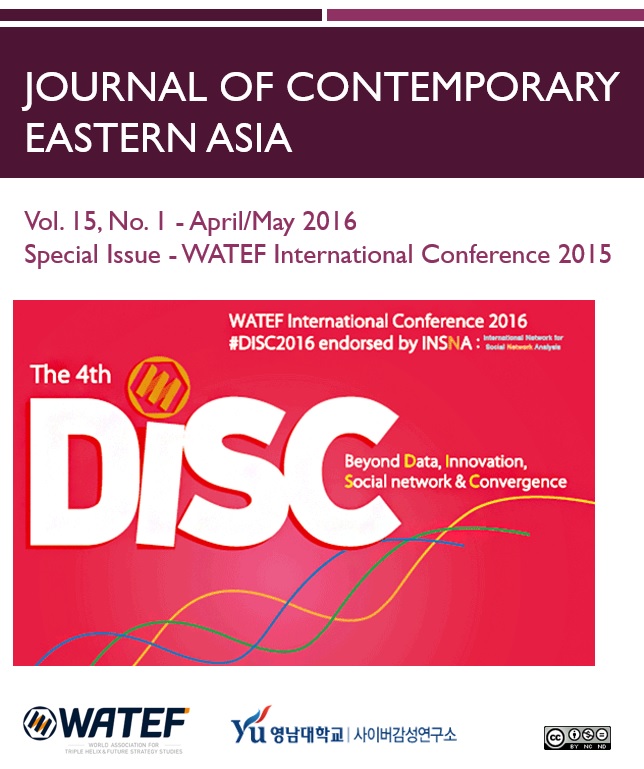- ENGLISH
- E-ISSN2383-9449
- SCOPUS
 E-ISSN : 2383-9449
E-ISSN : 2383-9449
East Asian Communication Technology Use and Cultural Values
Park, Han Woo (YeungNam University)
Abstract
This study examines media used for information in the East Asian countries of China, Japan, South Korea, Taiwan, and Singapore, using data from the World Values Survey. The sharing of Confucian culture may lead to a uniform media structure across these nations. Another possibility is technological determinism, which would also lead to similarity across nations. However, it is possible that countries are at different stages of technology development and will eventually become more similar. An opposing notion is that differences in other values among nations predict digital media use. To examine the evidence considering these possibilities, we factor analyze each population's use of nine traditional and digital media to see how similar the structures are. What results is a three-dimensional solution for four out of five countries, except Singapore, which has a more simple two-dimensional structure. Analysts regard Singapore as the most digitally connected society, which raises the question as to whether it is higher on a technological development trajectory, to which other countries may transition. Perhaps a more simple media use structure is an adaptation to increasing information load. As well, as mobile devices have become a primary means of accessing the range of traditional and social media, it may have an expanded role in reducing media channel entropy. In terms of frequency of media use, Singapore is highest, while China is the lowest. Singapore stands out in high mobile use, and China for low Internet use. There appear to be developmental differences across the nations. Regressions on Internet use for 18 values indices find different values predictors in the East Asian countries, ruling out Confucianism as producing similar media patterns.
- keywords
- Eastern Asia, cultural values, communication technologies
- 다운로드 수
- 조회수
- 0KCI 피인용수
- 0WOS 피인용수
